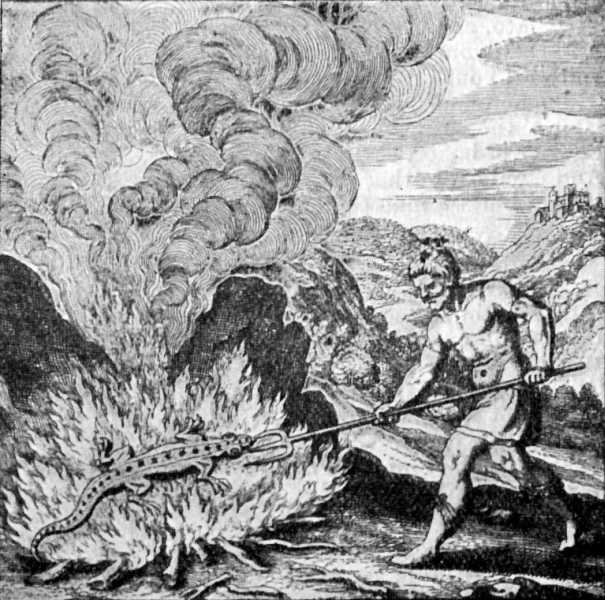Is Nessie a Huge Salamander?
Posted by: Nick Redfern on May 1st, 2015

“Reports of lake monsters absolutely abound across the entire planet. Amongst the most famous ones are Scotland’s Loch Ness Monster, Ogopogo of Lake Okanagan, and Champ of Lake Champlain. The big question is: if the “things” are real, then what, exactly, are they? On the matter of the Loch Ness Monster, creature-seekers have suggested they may be relic populations of plesiosaurs, marine reptiles that are believed to have become extinct tens of millions of years ago. Other theorists suggest the creatures might be immense eels. Sturgeon have been suggested for some reports. And there is also the supernatural scenario.
“There is, however, yet another angle, too: the idea that the beasts of Loch Ness are salamanders, albeit of a very (very) large size. Salamanders are amphibians that are noted for their long tails, blunt heads, and short limbs and which – in the case of the Chinese giant salamander – can reach lengths of six feet.”
Those are the opening two paragraphs to my new Mysterious Universe article.
See also:
Of Loch Ness, Salamanders, and Buoyancy
Stop the Science! It’s Bad for Business!
What Did Tim Dinsdale See at Loch Ness?
The Loch Ness Salamander – Latest
More on the Nessie Salamander
Giant Salamanders in Loch Ness?
Nessie: The Salamander Theory
A Scottish Salamander in the Loch?
#Nessie #LochNessMonster
About Nick Redfern
Punk music fan, Tennents Super and Carlsberg Special Brew beer fan, horror film fan, chocolate fan, like to wear black clothes, like to stay up late. Work as a writer.










We’ve been through this idea before a couple of times before. The answer is no. If Nessie were a giant salamander, the locals would know about it. It would be highly unlikely that a giant – gargantuan – race of salamanders would go unknown to the locals at some point in it’s life cycle. Reproduction by oviparous or viviparous means would still be occurring in the shallows to protect against predation by eels, fish and other animals. There could almost no way that the young, especially in larval stage, would go unnoticed.
Viviparous salamanders are all terrestrial or arboreal. Oviparous salamanders all lay eggs and no Nessie eggs or egg masses have ever been found. All salamanders are vertebrates and have skeletons. A 20+ foot long Nessiemander would have a big skeleton and no remains have ever been found. No salamanders have long necks. Young or larval stage Nessiemanders would live in shallow water to avoid predators and would be seen and caught by locals. No young Nessiemanders at any stage have been seen or caught in any depth of water at Loch Ness. While I like the name Nessiemander, it’s time for the “What if” people to start saying what if…
Nick’s full article over at Mysterious Universe is outstanding and definitely worth the read, as is the blog article by erika to which he links. The latter makes some important behavioral observations my own series on this subject has not gotten to yet, which are critical to the whole argument.
In reply to cryptokellie, the locals actually did identify and name the animal in question as “the great salamander”, or more simply just “the salamander” for at least two centuries before outsiders came in telling them it must be this or that. There is historical documentation this is how the locals identified the beast long before the press came along trying to sell people on plesiosaurs and long necks. (Long neck sightings are distinctly in the minority in witness reports from Loch Ness, and then usually at distances that would preclude telling a tail from a neck).
Aquatic caelcilians, contemporary legless salamanders, use viviparous reproduction and birth offspring about a third the size of adults. The marine Temnospondyls from the fossil record most likely used viviparous reproduction, and here we’re talking many species in the range of 15 to 25 feet long. I agree a larval stage wouldn’t go unnoticed in Loch Ness, but disagree a larval stage would be necessary in the first place.